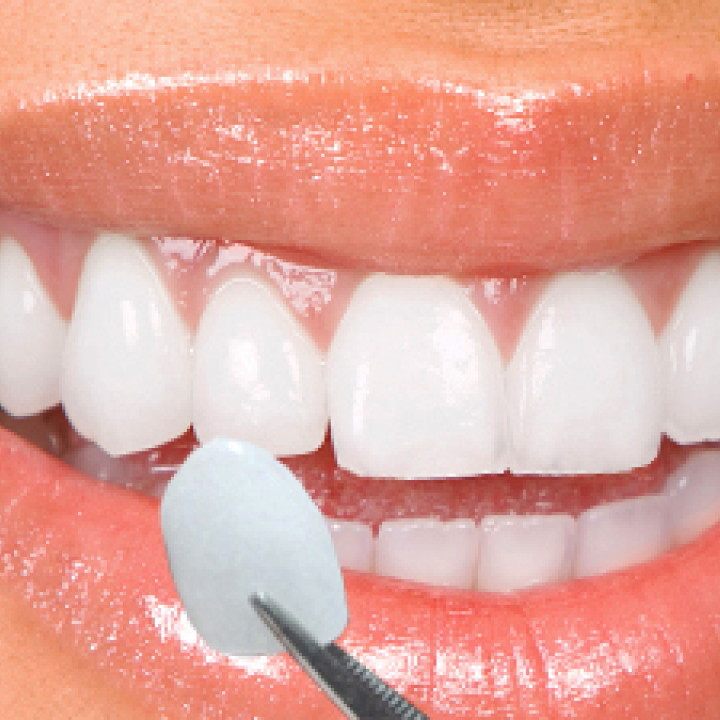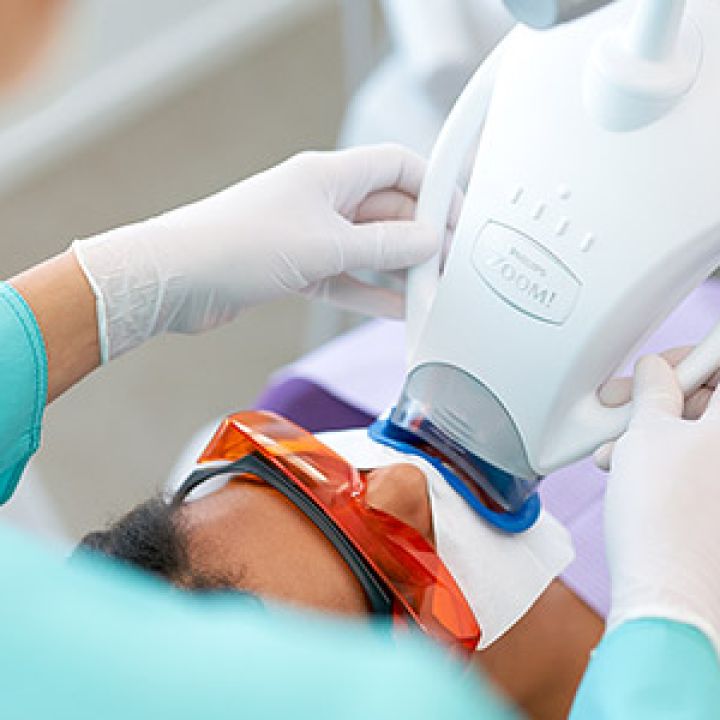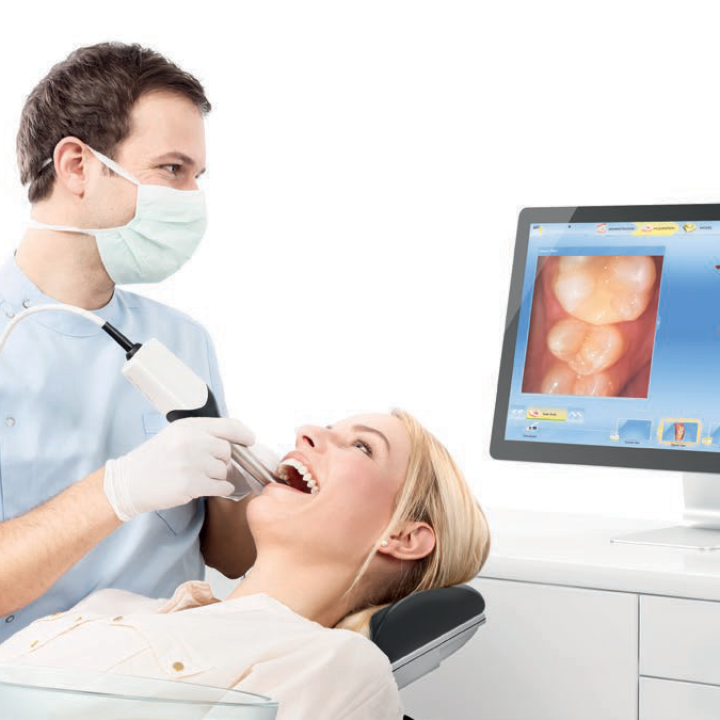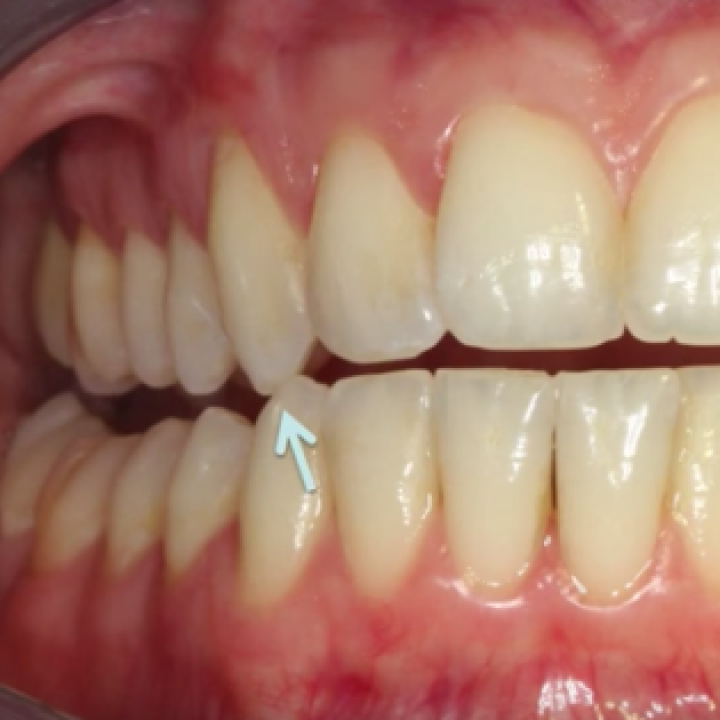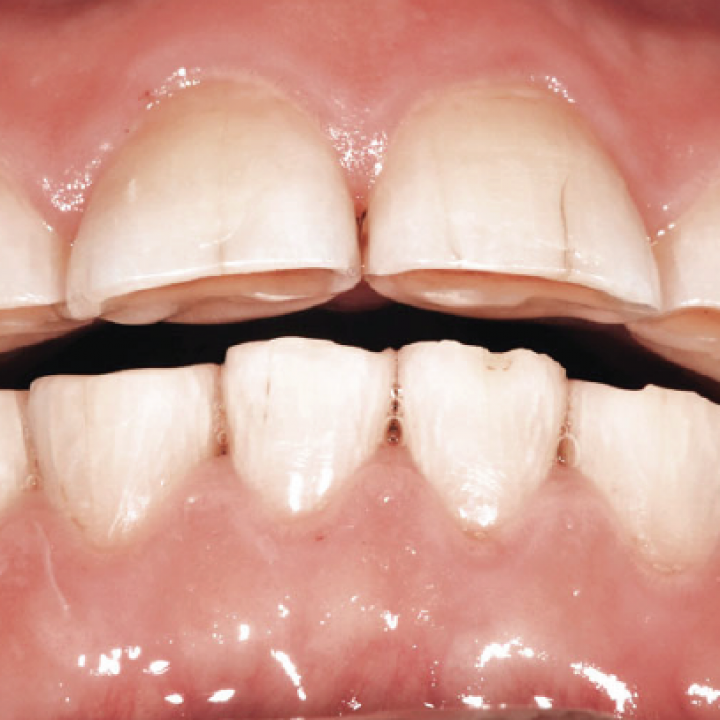Treatment for tooth wear
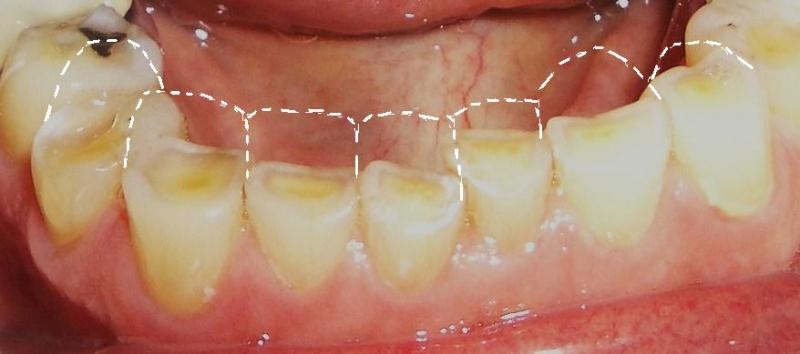
Due to the effect of tooth wear, some degree of enamel loss is always present. We follow the concept of minimally invasive treatment which means we preserve as much of your tooth structure as possible and aim to just adding 'enamel' back to the tooth. In essence you have already done a big part of tooth 'preparation' for us and we therefor just want to add on. Naturally we also place a high emphesis on prevention which means that we want to protect your teeth against any further wear.
Is there space to restore the teeth?
Teeth that have been worned down cannot just be restored or build up as often there is NO SPACE for the material. The opposide jaw bites down into these areas creating the wear in the first place and due to this worned bite, material cannot just be added since the bite will then be too high. The dentist is forced to removed even more tooth structure to create vertical space to build some protective layer of material over these worned areas. This is not ideal and a new workflow was created to overcome this method to restore the worned teeth with little to NO tooth reduction. 

This shortage of space is the main reason why treating tooth wear is so complex. We cannot just restore the one problem tooth in question and often the whole arch or both arches(all the teeth) need to be restored simultanously and raised to a new vertical dimention. This new layer of 'enamel' or material will be covering the whole biting surface and thus needs to be strong and well planned.
The Workflow
To plan the new shape, length and size of the new restorations we work with a photo of the face as our starting and reference point. With our DSD(Digital Smile design) set up taken from the initual wear consultation appointment we then transfer our 2D (DSD) design to the models and create a 3D design in wax on the worned plaster teeth. The wax represents the final shape and form of the new teeth and this then needs to be transfered to the mouth.
The final material will be porcelain as this is our state of the art long term solution to restore most wear cases. The porcelain will then be copied from the wax-up to the mouth using 3D software (CEREC 3D system) and the final porcelain restorations fitted to the teeth.
The 'Index -Technique'
Recently a new technique was developed to also use resin(composite) instead of porcelain to build up the worned teeth. Resin is more affordable than porcelain and although not a long term solution it can provide a good medium term outcome to get to the new vertical height to restore a worn dentition or smile. The wax up models are transfered to the mouth with a silicon index that represents the 3D shape of the new design. The resin is then injected into these indexes on the teeth and accurately copy the wax design to the mouth. The resin designs can then later be maintained with resin again or replaced with porcelain. 
Prevention
We put a high emphesis on preventing further tooth wear and wish all people can wear some form of tooth protection. The most common way to prevent tooth wear is wearing a night guard or biteplate. Common sense tells us that if you had a biteplate made 10 years ago your teeth would be protected during night time when most clenching and grinding takes place.
To find out more about night guards or bite plates please click here.

